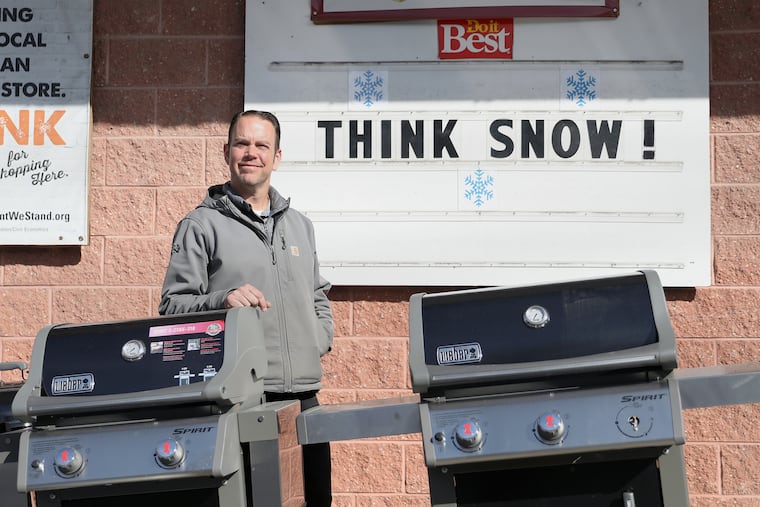Feds’ updated winter forecast favors warmth here and in most of the nation, especially December
In updating its December-through-February outlook, the Climate Prediction Center said the atmospheric tea leaves continue to favor a warmer-than-normal winter in much of the nation.

The weather has taken a turn more suited for Halloween than Thanksgiving, and that might well be a winter preview, according to federal meteorologists.
In updating its December-through-February outlook this week, the Climate Prediction Center said the atmospheric tea leaves continue to favor a warmer-than-normal winter in much of the nation, particularly in December.
Two private-sector giants, the Weather Channel and AccuWeather Inc., already had submitted amicus briefs supporting the case for a generally mild three months.
Driving the climate center’s outlook are computer-model guidance, recent winter temperature trends, and the near certainty that a La Niña, an anomalous cooling of sea surface temperatures over vast expanses in the tropical Pacific, will persist into spring, said forecaster Dan Collins.
» READ MORE: Expect warm weather, with above normal temperatures, this winter in Philly
Water temperatures out that way are as much as 3.5 degrees Fahrenheit below normal, the climate center said.
La Niña cooling distorts the upper-air circulation in such a way as to favor displacing the west-to-east jet stream winds — the boundaries between warm and cold air and the avenues for storms — more toward the northern tier of the country.
The flow across the nation would more likely be “zonal,” that is west to east from the mild Pacific, said Bob Smerbeck, a meteorologist with AccuWeather Inc. By contrast, a north-to-south flow would mean more cold-air invasions, sharper temperature contrasts, and more storminess.
In the name of prudence and science, the government forecasters eschew projections about snow, which is often a lottery situation.
But it would be at the very least a safe bet to predict that this winter will outdo the official 0.3 inches measured in Philadelphia for the entire 2019-20 winter, even if the early signs aren’t encouraging for snow.
As it did for most of last winter, the polar vortex, the swirling mass of cold air that circles the Arctic, has shown no inclination of weakening and allowing polar air to spill southward.
“During the heart of the winter we think the vortex will stay up there,” said Smerbeck.
In the interest of despair abatement for snow lovers, Smerbeck pointed out that one factor to keep in mind is the calendar. Thanksgiving is still a week away.
» READ MORE: When winter doesn’t come: Here are the winners and losers of Philly’s nearly snowless season
He said one thing to watch is snow cover in southern and eastern Canada. A robust buildup would be a ready supply of cold air nearby that a coastal storm could exploit, he said. Right now, it is close to normal.
Also, it is still uncertain where the core of the Pacific cooling will be situated during the winter, he added. If it developed west of where it normally would, that could alter the jet stream configuration across the United States.
For now, though, the atmosphere will be serving up a version of late October with Friday’s high cresting at 64 — that’s 10 degrees above normal — and due to head back to that neighborhood on Saturday.
And based on the consensus of the outlooks — and the government sees less than a 10% chance that December would be colder than normal — it’s beginning to look a lot like last winter.